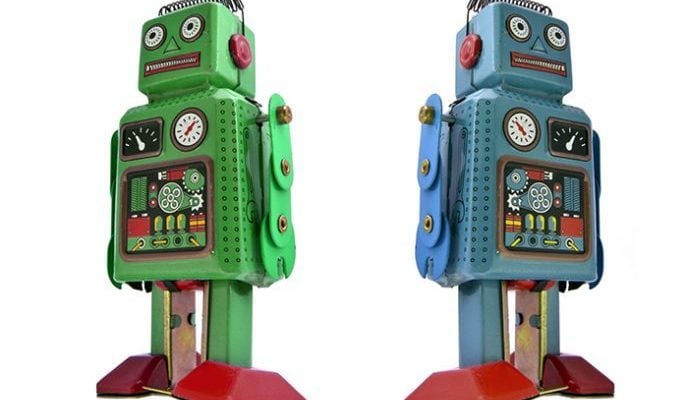The Evolution Of Service Technology Still Requires A Human Touch… For Now
Oct 03, 2017 • Features • Artificial intelligence • Augmented Reality • Future of FIeld Service • WBR • Sara Mueller • Parts Pricing and Logistics
Sara Mueller, Field Service Portfolio Director, WBR, discusses why despite the growing importance of technology within our industry, the critical balance between using automation to meet tightening SLAs and losing the important human touch points field service visits offer the benefits they bring...
They say the only thing constant is change.
In just over a decade we’ve seen service organisations move from cost to profit centers. Now business models are evolving beyond product-centricity towards selling solutions or customer business outcomes. This shift in business model evolution and higher levels of customer service comes largely from the innovative technologies that are being widely adopted across global service organisations.
So much so that companies are quickly falling behind their competition and losing money to inefficiencies if they are too slow to adopt the cutting-edge technologies that have filled the service space in the last few years.
As the market analyst and director of program development for the Field Service USA and Europe events, I spend my time looking for trends that seem like they will stick, and uncovering the buzz behind buzz words.
I’d like to share with you three technology changes that have been popping across my radar lately, that seem to be here to stay.
Artificial Intelligence
Artificial intelligence (AI) is one such buzz word.
Field service leaders are actively debating how it will impact the industry.
Do service executives believe robots will take the place of field technicians or customer service operators in the short-to-medium term future? No (though more service organisations are adopting the use of drones to carry out service inspections in a safer, more timely manner). There is a critical balance that must be maintained between the technology service organisations use to keep machines up and running, and the personal human touch points that often contributes to higher levels of customer satisfaction.
Where I do see AI already being used within service organisations today, however, is with machine learning.
Augmented Reality
Secondly, our Field Service events have been talking about the opportunity for augmented reality (AR) in service for a few years now. I am starting to see companies that have finally piloted or are using AR as a standard tool of their service organisation.
Early conversations around AR debated whether the technology should be given to customers, so they could be the eyes for the experienced service technician (rather than the service organisation having to pay to dispatch an engineer to the site).
But generally most service organisations have decided that from a liability and legal perspective, its best to send a more junior-level technician to the site with the AR glasses or hands-free device, rather than put the tools in the hands of the customer.
A reason that the adoption of AR by service organisations has finally picked up is that the technology has gotten better, cheaper, and with more choices available. Devices are lightweight and more intuitive as the technology has evolved.
One limitation of AR is connectivity bandwidth. While only a small bandwidth is necessary for AR to work, if your customer’s facility has limited Wi-Fi or an unstable signal, it could disrupt performance and communication. So service organisations are starting to build the use of AR into their service agreements, including ownership of Wi-Fi so they can control the Wi-Fi sources themselves to produce a more stable environment to support AR.
Parts Management
Finally, if you are in service you need to have the right parts in the right place at the right time in order to get the job done. This hasn’t changed. But the way service organisations are carrying out service parts planning has.
Several years ago organisations were managing parts on Excel spreadsheets and realised they needed a more robust tool to carry out planning effectively. Nowadays, since most service organisations have adopted field service management (FSM) systems, they are no longer integrating a parts planning tool into their ERP, they are integrating it into the FSM system.
It’s an exciting time for field service technology, especially if you embrace change.
Instead, it may now be more efficient for a technician to service a wider variety of products at different customer sites; therefore the inventory he needs to carry around is more complex. Even a technician’s training becomes part of the selection criteria in the FSM to determine which customer site he will be dispatched to; so this type of training data is being integrated into service inventory planning tools as well.
It’s an exciting time for field service technology, especially if you embrace change. But as I alluded to earlier, there is still a critical piece of service that comes from the human connection between technician and customer. No matter how technology evolves, the service industry will have to figure out the right balance of technology and human intimacy in order to maintain customer satisfaction and loyalty.





















 Field Service News is published by 1927 Media Ltd, an independent publisher whose sole focus is on the field service sector. As such our entire resources are focused on helping drive the field service sector forwards and aiming to best serve our industry through honest, incisive and innovative media coverage of the global field service sector.
Field Service News is published by 1927 Media Ltd, an independent publisher whose sole focus is on the field service sector. As such our entire resources are focused on helping drive the field service sector forwards and aiming to best serve our industry through honest, incisive and innovative media coverage of the global field service sector.
Leave a Reply